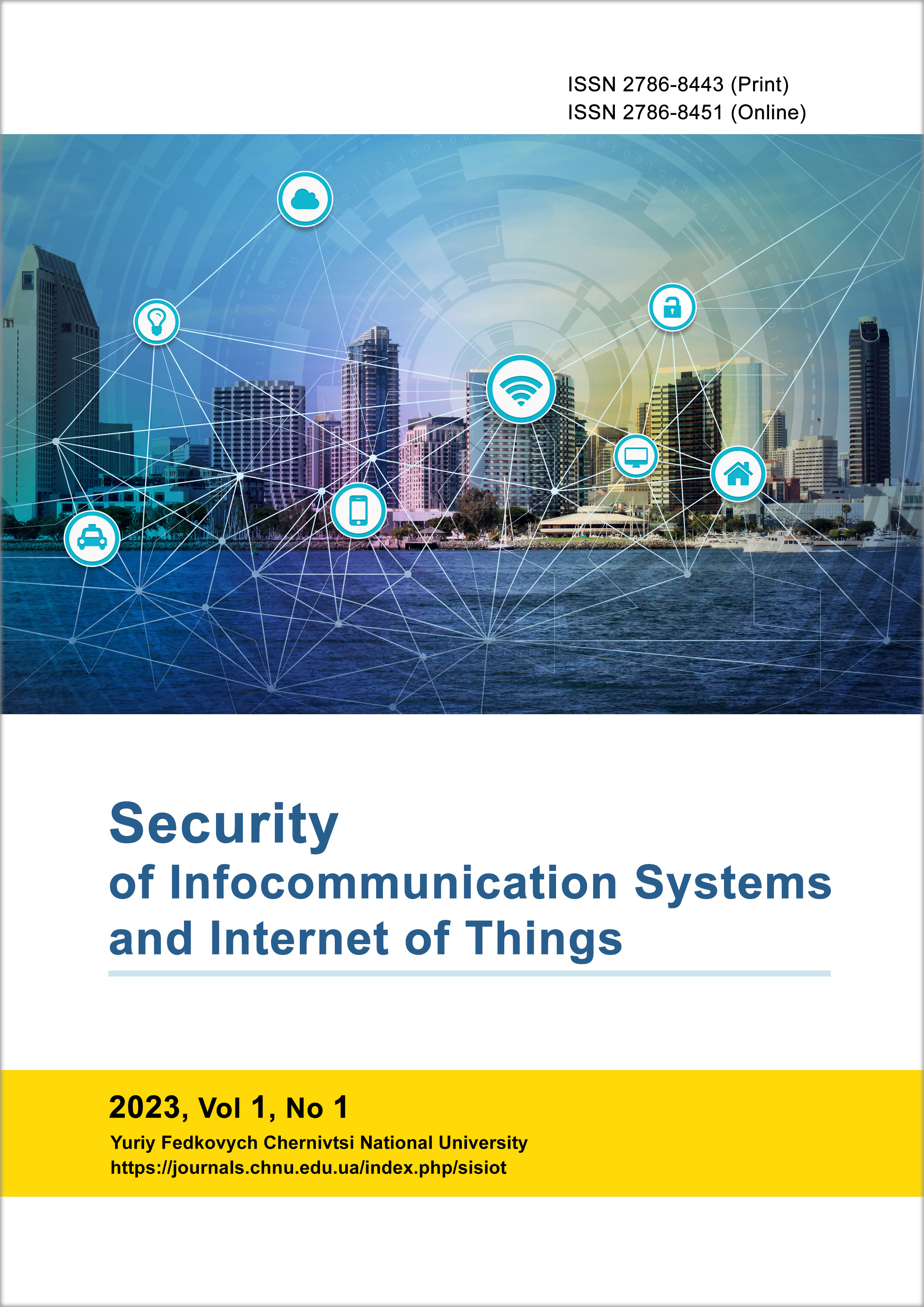Dual Authentication Technique for RFID Access Control Systems with Increased Level of Protection
DOI:
https://doi.org/10.31861/sisiot2023.1.01011Keywords:
automatic identification, RFID tag, IoT security, key, cloud serviceAbstract
Currently, there are no uniform international standards for devices and systems that use radio frequency identification technology. Using tag alone as an identifier imposes certain restrictions on the level of protection of access control systems, since the unique tag identifier can be easily copied, so two-step authentication is required. The second level of protection can be a digital password entered via the keyboard. The work presents dual authentication technique for access control to the premises. Increasing the level of protection of radio frequency identification systems is achieved by the additional use of a digital password encrypted using a symmetric block encryption algorithm and recorded on the tag. This removes any restrictions on the number of registered users in the system, because passwords and IDs are stored on tags. The laboratory model of the device is based on the NodeMCU-32S Opensource platform with an RFID module that allows connection to most fog and cloud services of the Internet of things. The development is based on the ESP32 controller, which supports the necessary set of commands and hardware for implementing the methodology, in particular, wireless standards and communication protocols, hardware-accelerated encryption. The Cayenne service from MyDevices was chosen as the cloud platform, which made it possible to configure the device using the publish-subscribe messaging protocol and develop a graphical user interface. A log on the Cayenne platform is used to keep track of users, a character display is used to display the current status and settings of the device, and a serial interface is used to debug work algorithms. The software is implemented using the Arduino C programming language.
Downloads
References
L. Bin, Z. Rong, L. Sifeng, "RFID system and its perspective analysis with KERGM(1,1) model," Journal of Computers, vol. 3, pp. 9-15, July 2008.
D. C. Wyld, "24-karat protection: RFID and retail jewelry marketing," International Journal of UbiComp, vol. 1, pp. 1-14, Jan 2010.
C. Munoz-Ausecha, J. Ruiz-Rosero, G. Ramirez-Gonzalez, "RFID applications and security review," Computation, vol. 9, pp. 69 – 21, Jun 2021.
G. M. Bianco, E. Raso, L. Fiore, V. Mazzaracchio, L. Bracciale, F. Arduini, et al., "UHF RFID and NFC point-of-care – architecture, security, and implementation," IEEE Journal of Radio Frequency Identification, doi: 10.1109/JRFID.2023.3268422.
International Organization for Standardization. (2023, Jun. 26). Automatic identification and data capture techniques Including RFID, OCR, bar coding, etc. [Online]. Available: https://www.iso.org/ics/35.040.50/x/
B. O. Kose, H. Uluoz, V. Coskun, "Secure design on MIFARE Classic cards for ensuring сontactless payment and control services," Advances in Cyber-Physical Systems, vol. 7, pp. 22-28, 2022.
N. T. Courtois, K. Nohl, S. O'Neil. (2008). Algebraic attacks on the Crypto-1 stream cipher in MIFARE Classic and oyster cards [Online]. Available: https://eprint.iacr.org/2008/166
J. Nechvatal, et al., “Report on the development of the Advanced Encryption Standard (AES),” National Institute of Standards and Technology, U.S. Department of Commerce, Gaithersburg, Sci Rep. 106, 2001.
Shenzhen Ai-Thinker Technology Co., “Nodemcu 32s,” datasheet, 2019.
Espressif Systems. (2023, Jun. 26). ESP-IDF Programming Guide [Online]. Available: https://docs.espressif.com/projects/esp-idf/en/latest/esp32/
GitHub Inc. (2019, Feb. 15). Cayenne MQTT ESP Library [Online]. Available: https://github.com/myDevicesIoT/Cayenne-MQTT-ESP
F. Azzedin, T. Alhazmi, "Secure data distribution architecture in IoT using MQTT," Applied Sciences, vol. 13, pp. 2515 – 13, Feb 2023.










